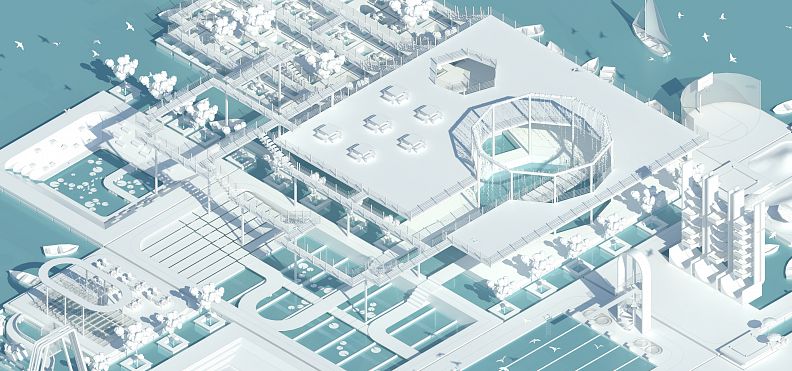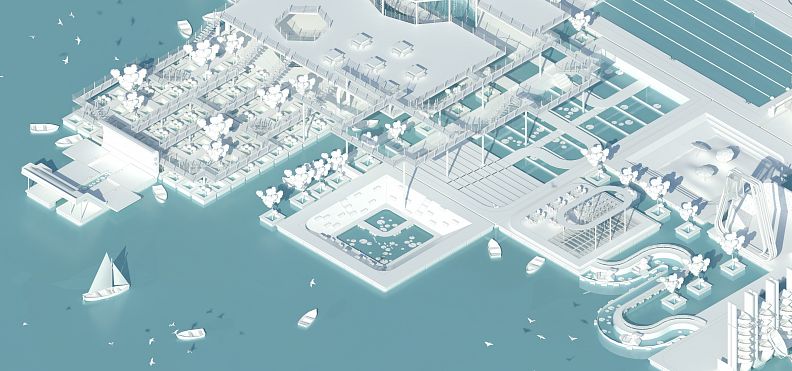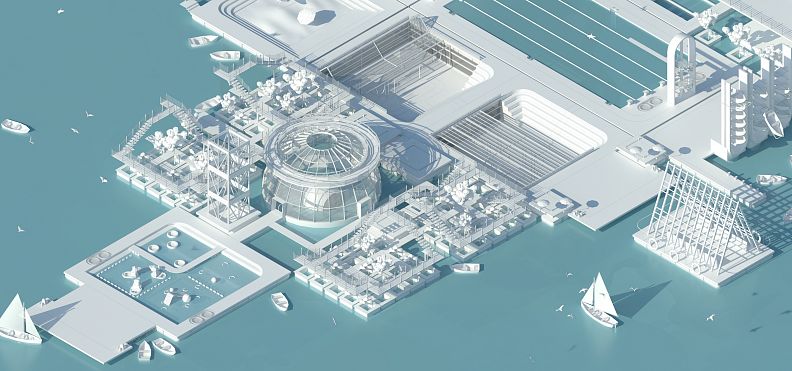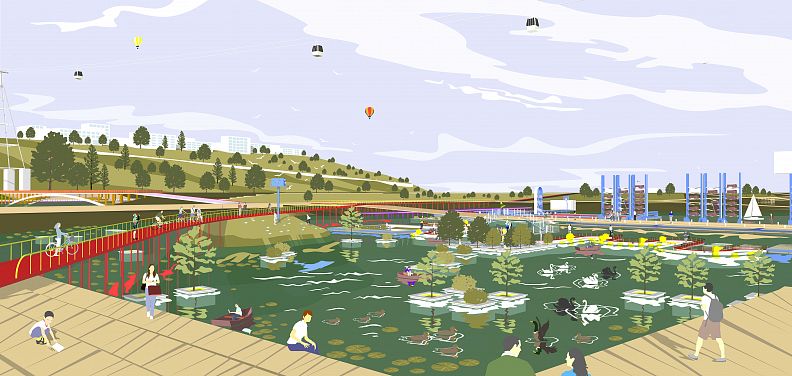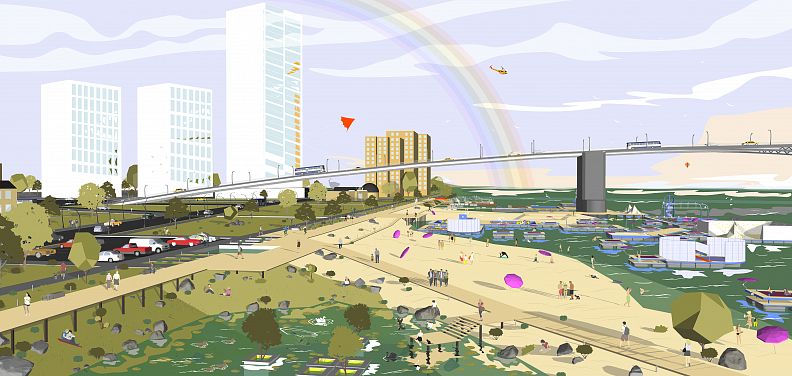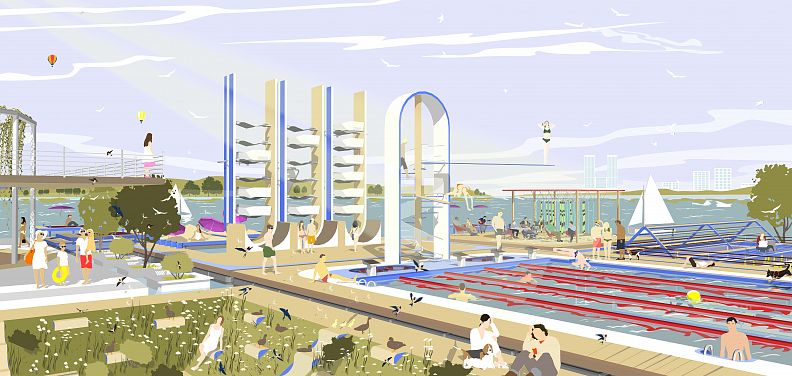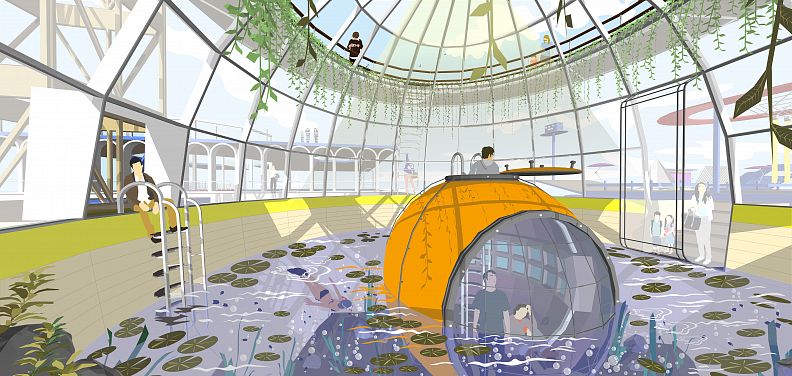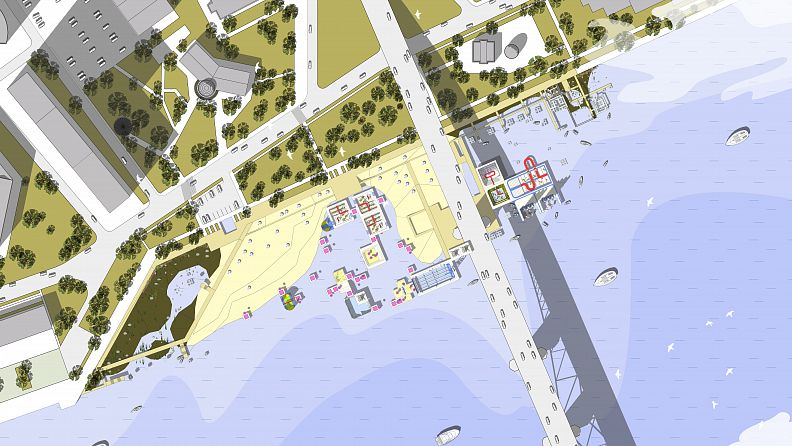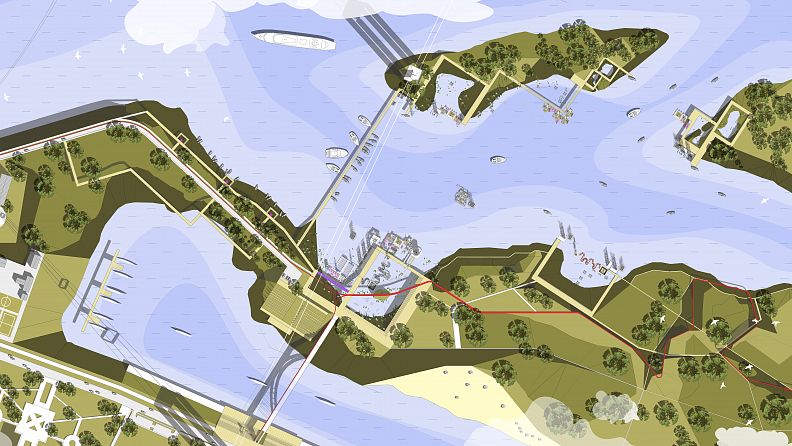ARCHITECTURAL DESIGN SOLUTION FOR FLOATING RECREATION FACILITIES IN THE VOLGA AREA

Project idea
Architectural and design solution for floating recreational facilities in the Volga water area.
The organization of recreational mobile objects on the water could reduce the expectation of the implementation of large-scale and large-scale renovation projects of coastal territories.
Due to its mobility and buoyancy properties, interactions between the banks and cities on the river can be achieved, and the integration of the water space into human life increases.
Thus, water will be activated and included in the general system of human habitats, and life will appear on the water. The scenario of a person's day can radically change, both in terms of transport infrastructure and walking routes and movement along them.
Project description
The concept of work proposes the development of a design solution for the implementation of floating self-propelled platforms with the formation of a system of public spaces on the water.
The developed system of floating platforms will allow to develop the water area of the river in the form of public spaces that will connect the banks and cities on the river, creating an organized interconnected structure, as well as influence the improvement of the ecology of the Volga water area.
The objects will be interconnected by means of electronic modules that are able to analyze social interactions on floating platforms (number of people in queue, occupied places, etc.) and offer possible filling of modules, as well as to analyze the environment using climate sensors , revealing the state (level) of water / atmospheric indicators, showing a violation of the ecological balance.
Technical information
Within the framework of the project, a design area is being developed in three cities on the Volga River, based on three models of space organization:
- Model - City: this design model is located within the boundaries of an urban formation, as a rule, it is the central embankment of the city with a characteristic chain of public spaces in it, into which the projected volume is compactly embedded, creating functional diversity, complementing the existing system.
- Model - Natural: the design model is located within the boundaries of the urban formation or at the periphery. The purpose of this model is to act as a connecting function, complementing the urban planning infrastructure and creating landscaping.
- Model - Industrial: the design model is located within the boundaries of an urban entity or at the periphery, borders on an industrial area or is located within it. The purpose of this model is to create a public space with access to water in a limited area and the harmful effects of an industrial zone, to solve the problem of pollution of the territory and water body.
Thus, the design method by creating functional typologies of models makes it possible to explain the presence of a certain zone in a specific location and its interaction with the existing environmental context.
